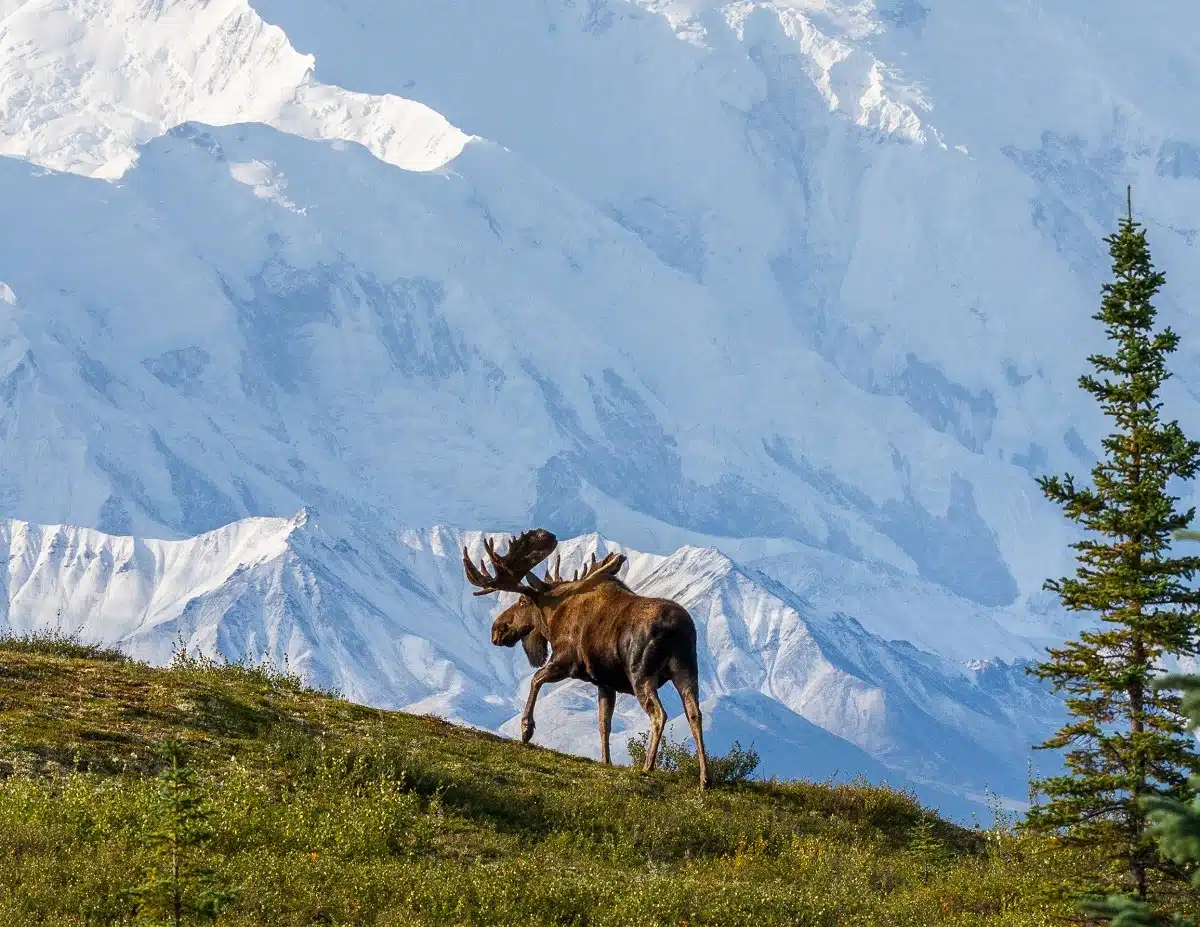Alaska, a land of rugged beauty and untamed wilderness, is a haven for wildlife enthusiasts. Alaska’s diverse landscapes are home to an array of spectacular wildlife, from the icy waters of the Arctic to the dense forests of the Interior. This guide takes you through the best spots and activities to witness Alaska’s majestic creatures in their natural habitats. Whether cruising through glacial fjords or trekking in national parks, each experience offers a unique glimpse into the wild heart of Alaska.
1. Bear Watching in Katmai National Park
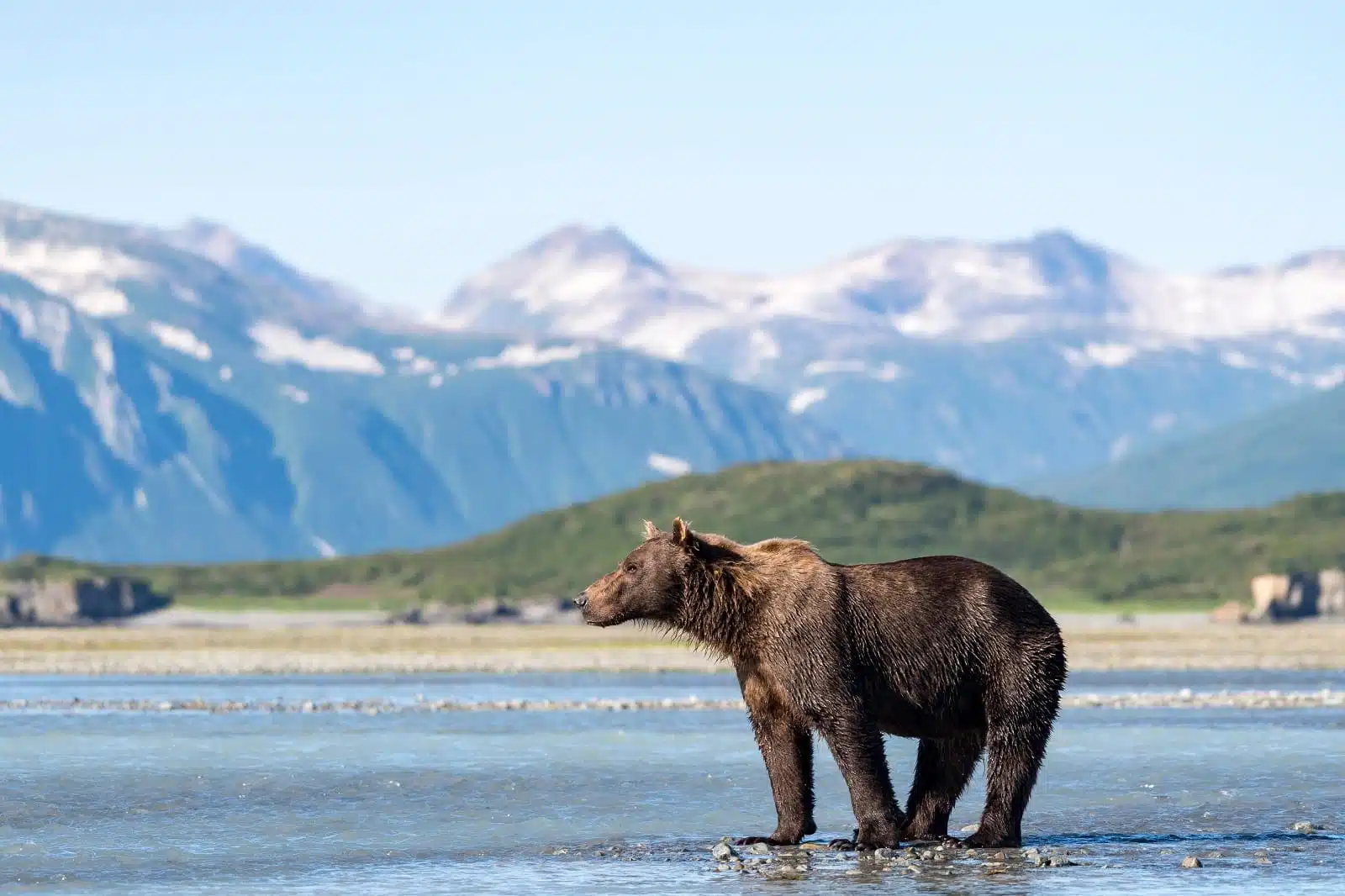
Image Credit: Shutterstock / imageBROKER.com
Katmai National Park, a remote wilderness in Alaska, is a world-renowned destination for bear watching. The park’s large population of brown bears is most visible at Brooks Falls, where they famously catch leaping salmon. Observing these mighty creatures in their natural habitat is a thrilling experience. Besides bear-watching, the park offers stunning volcanic landscapes and opportunities for fishing and kayaking. The park’s visitor centers and ranger-led programs provide valuable insights into the ecology and behavior of these magnificent animals.
Insider’s Tip
Book a guided bear-watching tour for expert insights and safe viewing opportunities.
When To Travel
July to early September is the best time to see bears fishing for salmon.
How To Get There
Accessible only by plane or boat, you can fly from Anchorage or Kodiak to King Salmon, followed by a small plane to the park.
2. Whale Watching in Kenai Fjords National Park
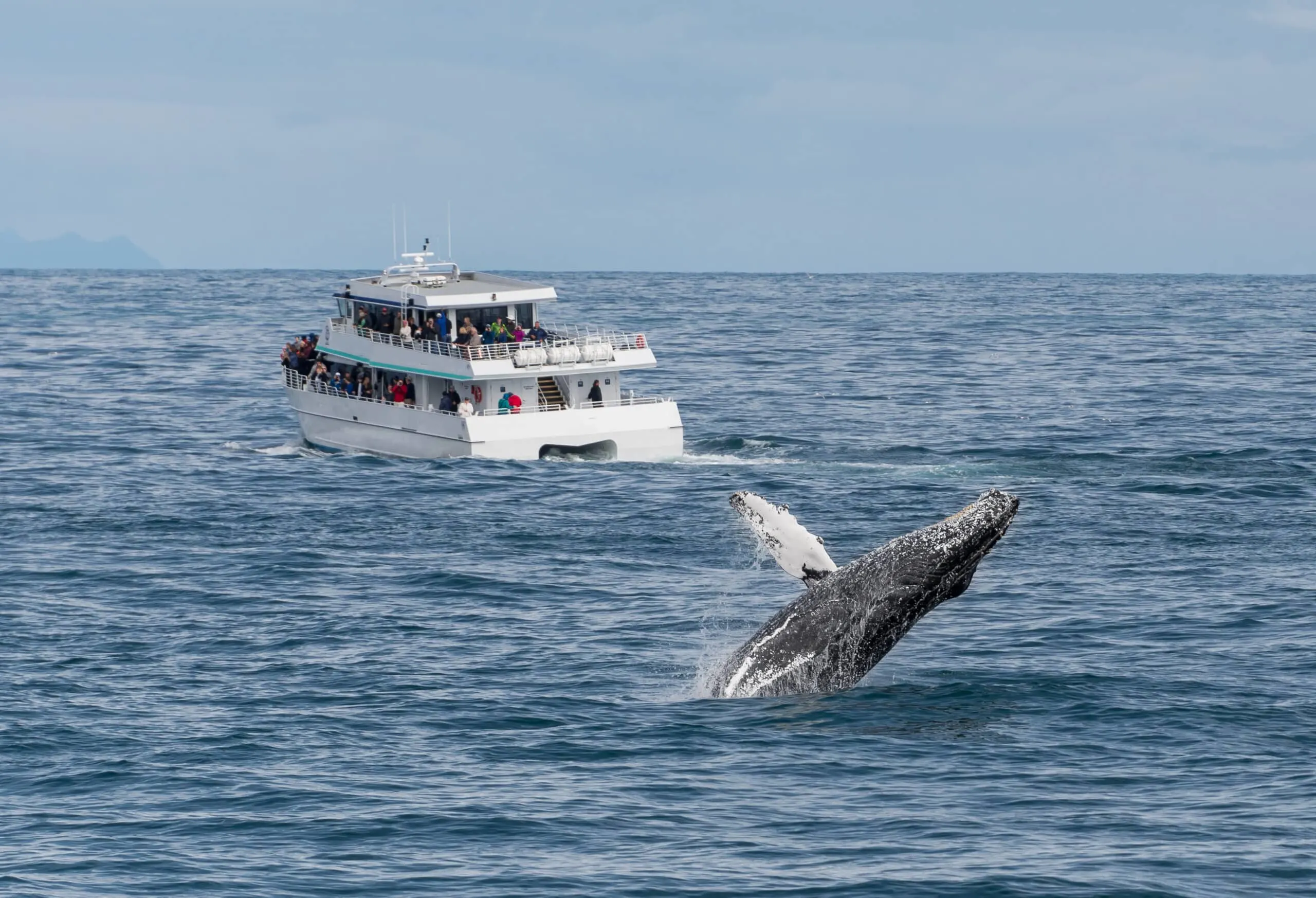
Image Credit: Shutterstock / Dominic Gentilcore PhD
Kenai Fjords National Park is a marine wonderland offering some of the best whale watching in Alaska. The park’s icy waters are frequented by humpback whales, orcas, and gray whales, providing spectacular viewing opportunities. Boat tours from Seward take you into the heart of the fjords, where you can see glaciers calving into the ocean. The park’s rugged coastline is ideal for sea kayaking, offering a closer encounter with the marine environment. The sound of a whale’s breath as it surfaces nearby is an unforgettable experience.
Insider’s Tip
Opt for a small boat tour for a more intimate, less crowded, whale-watching experience.
When To Travel
Mid-May to mid-September is the prime whale-watching season.
How To Get There
Drive or take a bus from Anchorage to Seward, where boat tours depart.
3. Birding in the Alaska Maritime National Wildlife Refuge
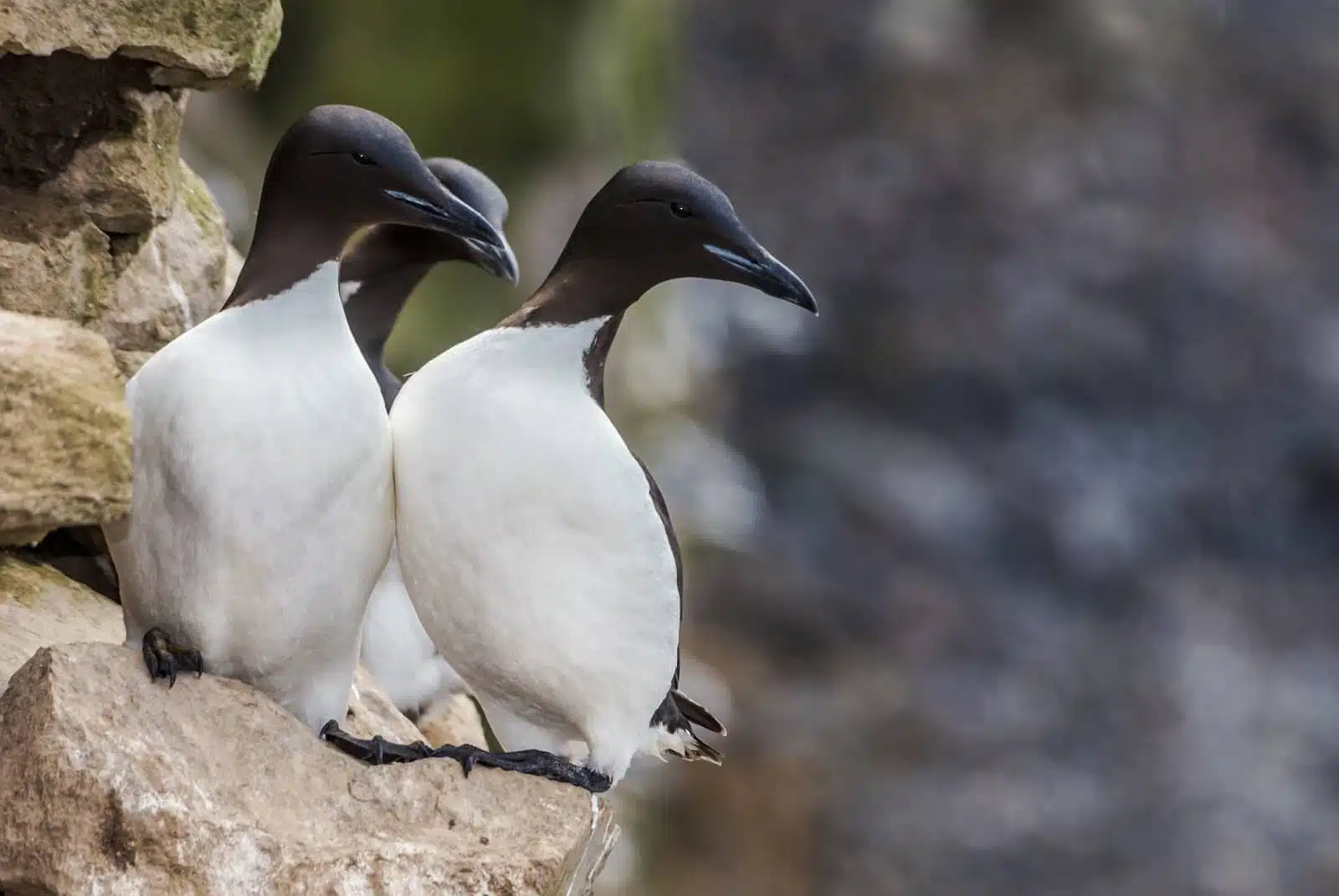
Image Credit: Shutterstock / Nick Pecker
The Alaska Maritime National Wildlife Refuge is a bird watcher’s paradise, hosting millions of seabirds on its rugged islands and remote coastlines. The refuge’s diverse habitats are home to puffins, albatrosses, and many other species. Accessible mainly by boat, the refuge offers an off-the-beaten-path experience for those looking to immerse themselves in Alaska’s bird life. Guided boat tours provide access to some of the most spectacular bird colonies, with knowledgeable guides enhancing the experience.
Insider’s Tip
Bring binoculars and a good camera with a zoom lens for the best birding experience.
When To Travel
Late spring and summer are the best times for birding.
How To Get There
Accessible by boat or plane, tours typically depart from Homer or Kodiak.
4. Moose and Caribou in Denali National Park
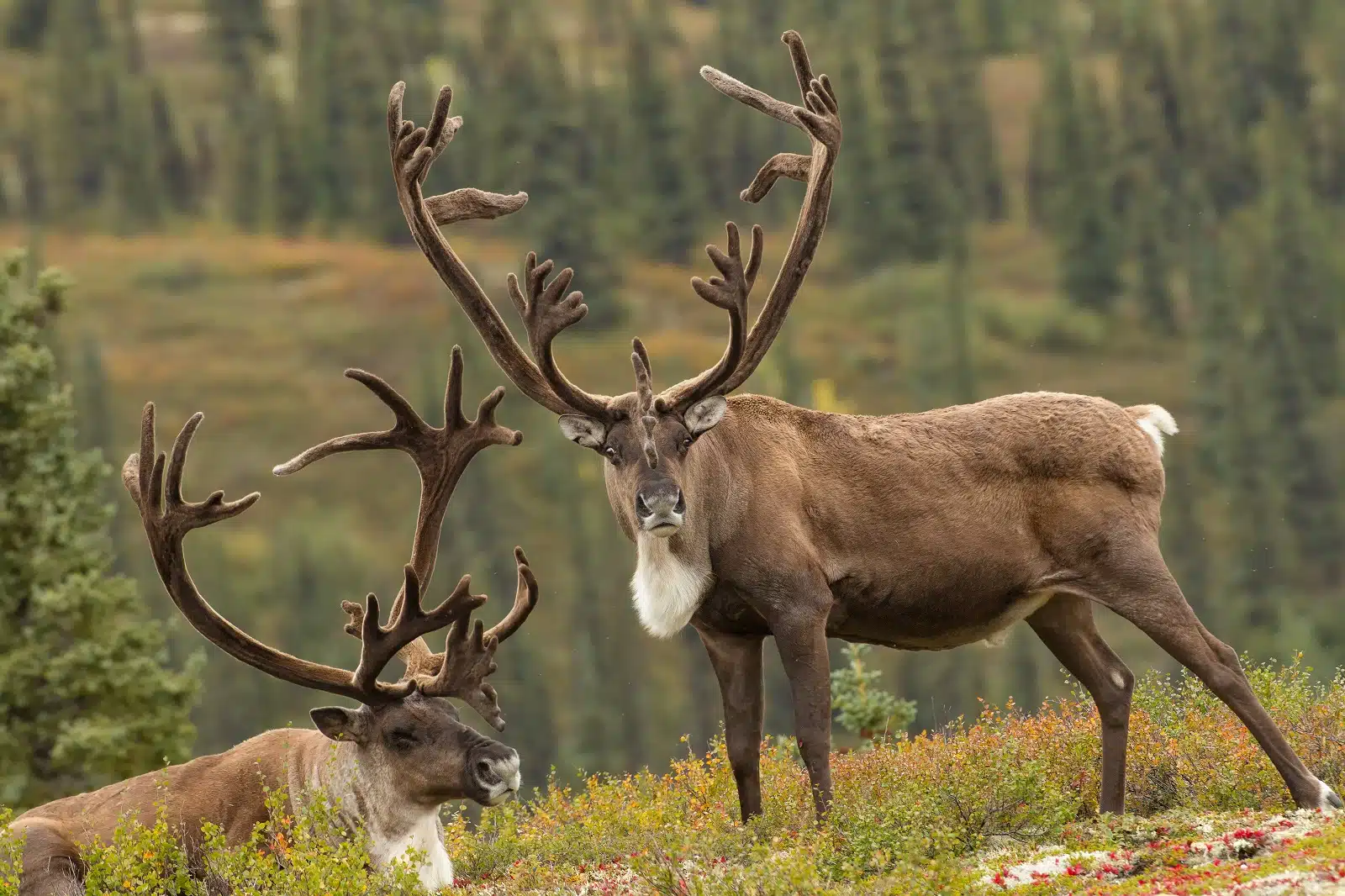
Image Credit: Shutterstock / Agnieszka Bacal
Denali National Park, known for its breathtaking landscapes and diverse wildlife, is a prime location for viewing moose and caribou. The park’s vast wilderness, ranging from lowland forests to alpine tundra, provides the perfect habitat for these animals. Bus tours along the Denali Park Road offer the safest and most effective way to see moose, caribou, and other wildlife like wolves and grizzly bears. The park also offers numerous hiking trails and ranger-led programs for a more immersive natural experience.
Insider’s Tip
Take an early morning or late evening tour for the best chances of spotting wildlife.
When To Travel
Summer is the best time for wildlife viewing in Denali.
How To Get There
Drive from Anchorage or Fairbanks, or take the Alaska Railroad to Denali.
5. Sea Otters in Prince William Sound
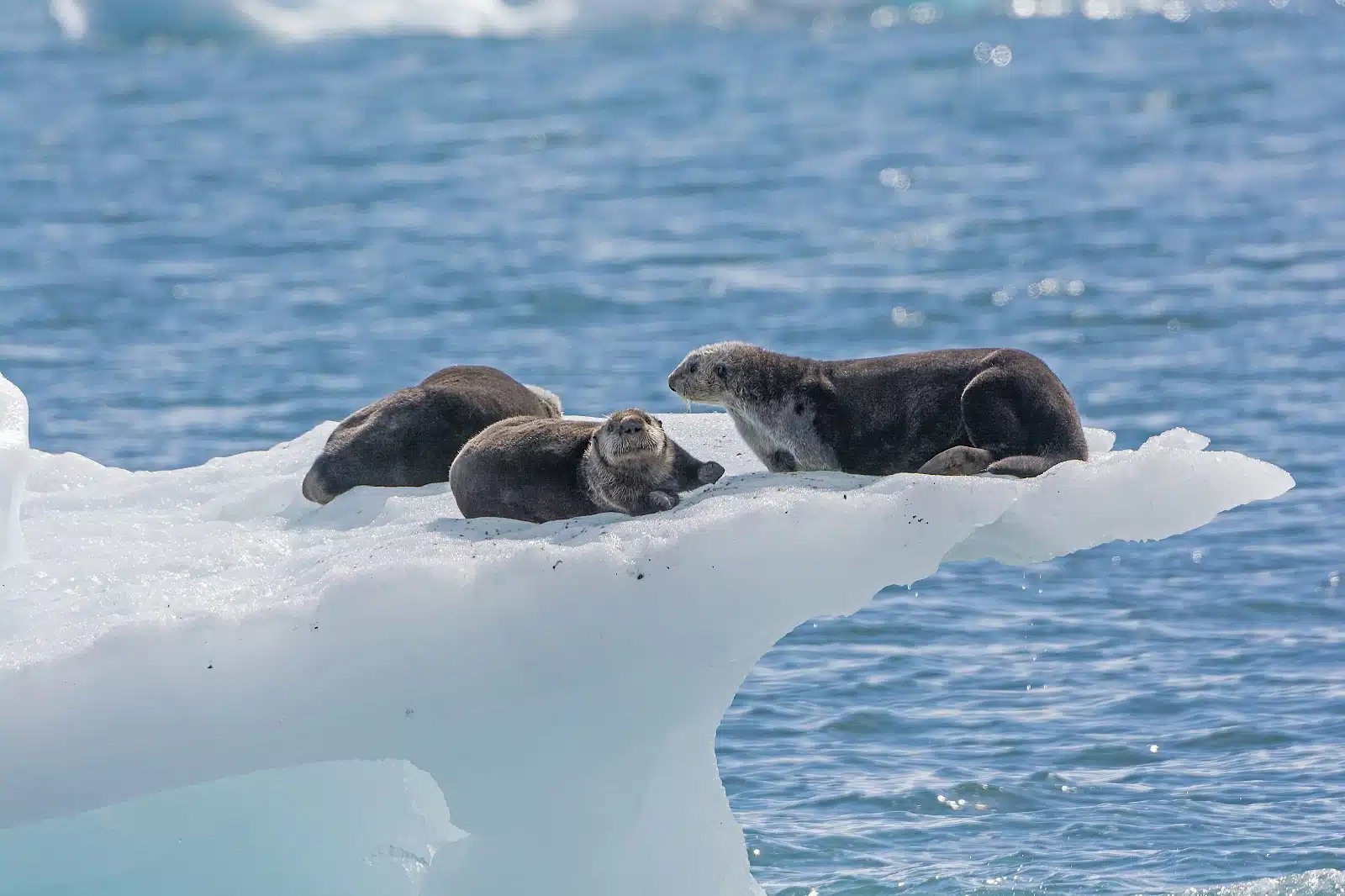
Image Credit: Shutterstock / Wildnerdpix
Prince William Sound is a serene and beautiful area, home to a large population of sea otters. These playful creatures are often seen floating on their backs among the kelp forests, and boat tours from Valdez or Whittier provide excellent opportunities to observe them up close. The sound’s calm waters are also ideal for kayaking, offering a peaceful way to explore the area and possibly encounter otters and other marine wildlife.
Insider’s Tip
Choose a kayak tour for a quieter, closer encounter with the otters.
When To Travel
Late spring to early fall is ideal for otter watching.
How To Get There
Drive or take a train to Whittier or Valdez, where tours are available.
6. Bald Eagles in Haines
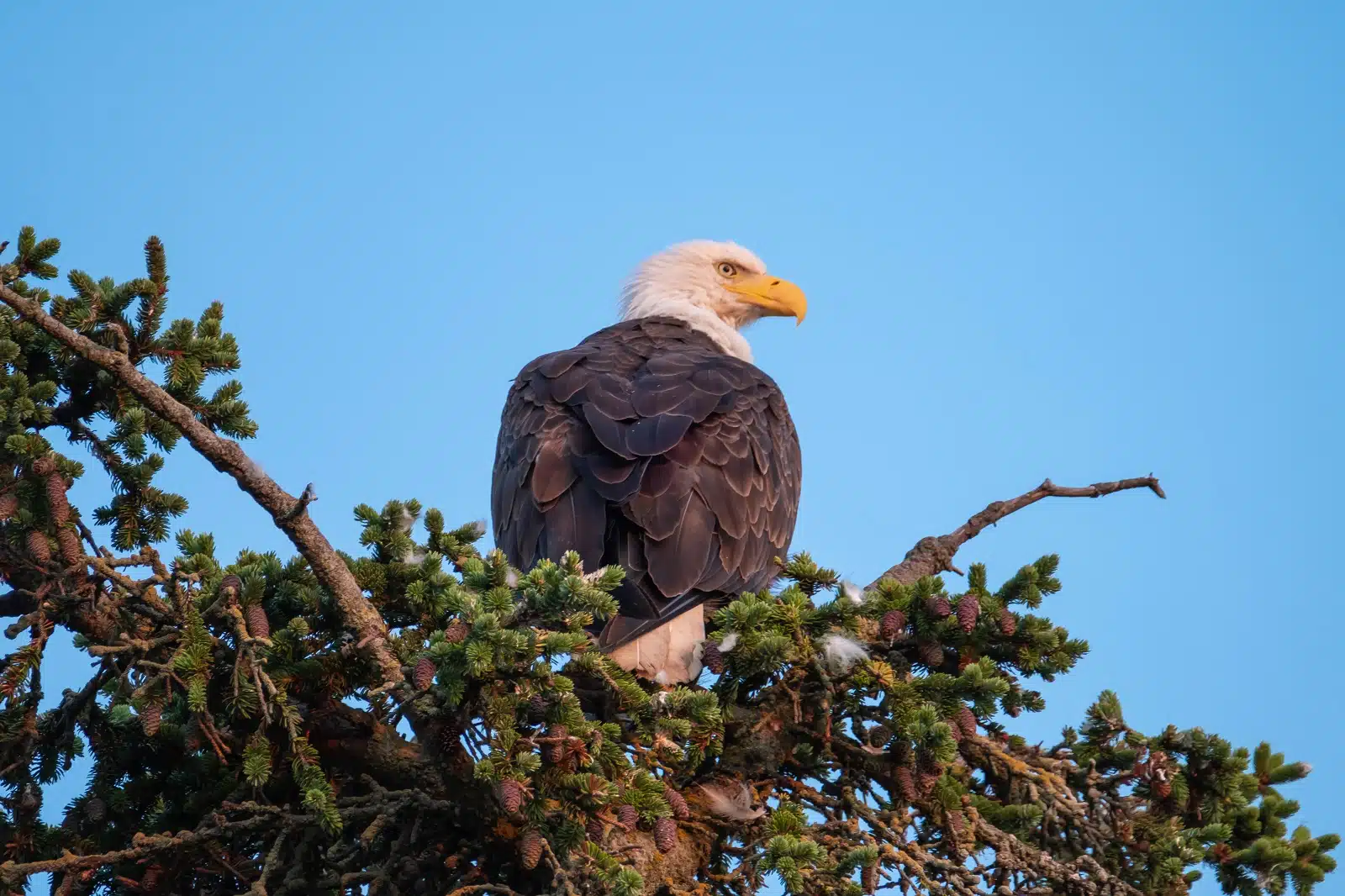
Image Credit: Shutterstock / Dino Adventure
Haines, Alaska, is often referred to as the ‘Eagle Capital of America’ and for good reason. The Chilkat Bald Eagle Preserve in Haines is one of the best places in the world to see bald eagles, especially along the Chilkat River, where they gather in large numbers. The annual Alaska Bald Eagle Festival in November celebrates these majestic birds, featuring photography workshops and cultural events. Outside the festival, the area offers year-round eagle viewing opportunities in a stunning natural setting.
Insider’s Tip
Visit during the Bald Eagle Festival in November for special events and guided tours.
When To Travel
Late fall, especially November, is the peak season for eagle watching.
How To Get There
Fly to Juneau, then take a ferry to Haines or drive from Anchorage.
7. Wolves in Wrangell-St. Elias National Park
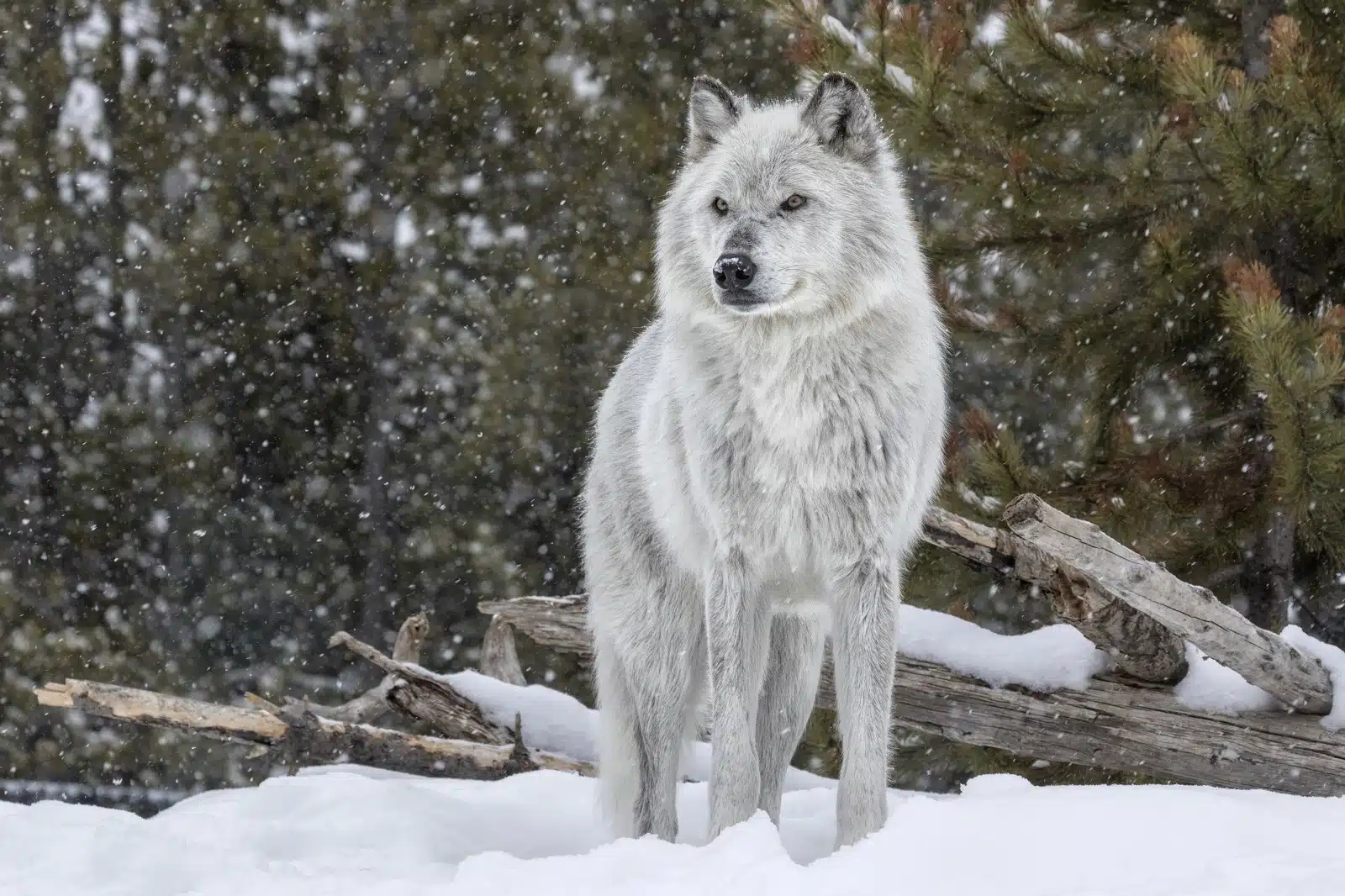
Image Credit: Shutterstock / David Osborn
Wrangell-St. Elias National Park, a vast and wild landscape, offers a rare opportunity to see wolves in their natural habitat. The park’s immense size and diverse ecosystems make it an ideal habitat for these elusive creatures. Guided tours and backcountry expeditions can increase your chances of spotting wolves, though patience and luck are key. The park also offers incredible hiking, camping, and mountaineering opportunities, making it a perfect destination for adventure seekers.
Insider’s Tip
Engage a knowledgeable guide who knows the best areas for wolf sightings and can interpret tracks and signs.
When To Travel
Summer is the best time for accessibility to the park and wildlife viewing.
How To Get There
The park is accessible by road from Anchorage or by small plane for more remote areas.
8. Polar Bears in Kaktovik
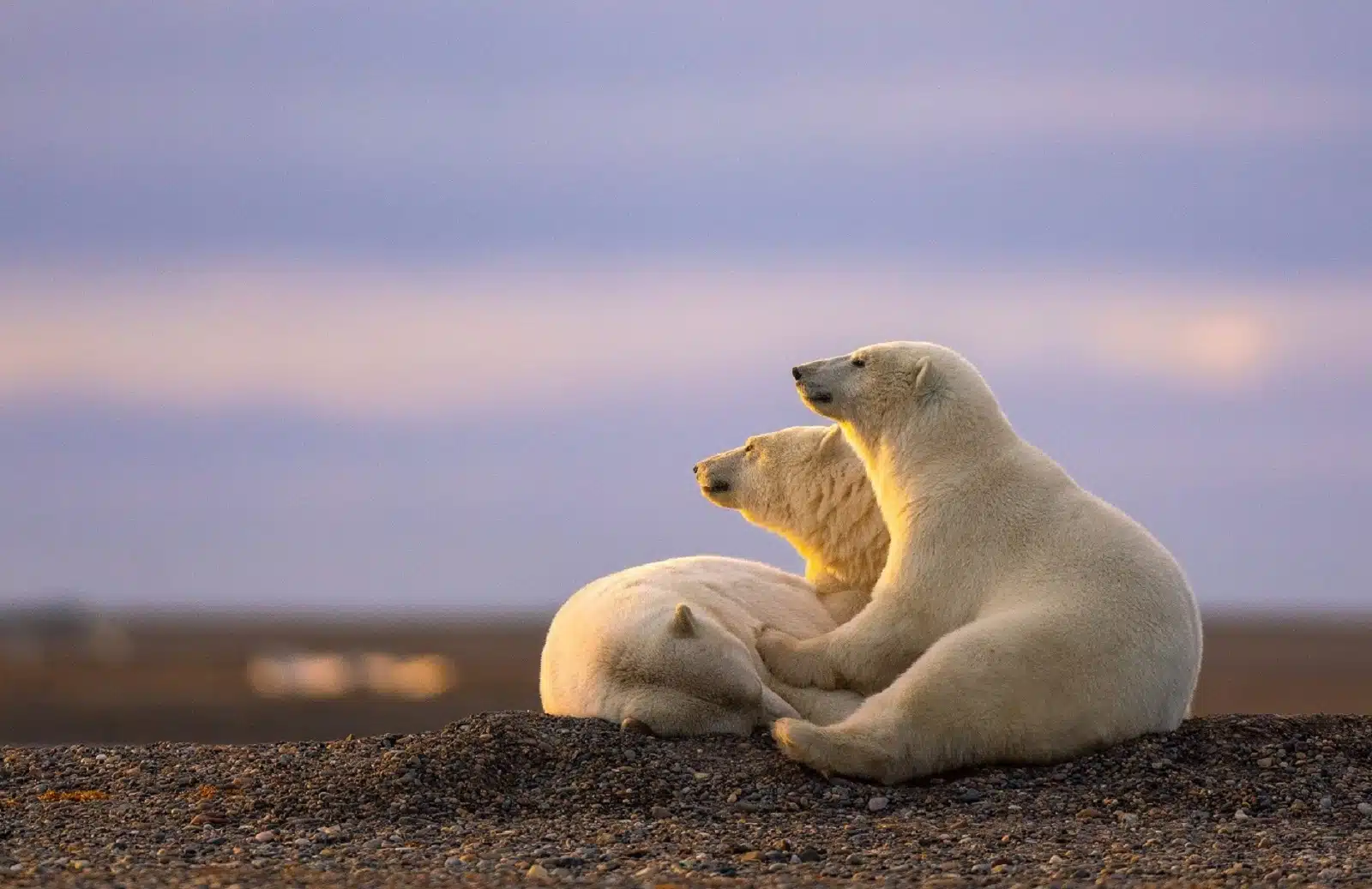
Image Credit: Shutterstock / Morpheus Szeto
Kaktovik, a small village on the Arctic coast of Alaska, offers one of the most unique wildlife experiences in the world – polar bear viewing. During the late summer and fall, polar bears can often be seen near the village, especially as they wait for the sea ice to form. Guided tours provide safe and respectful ways to observe these magnificent animals in their natural environment. This experience is a stark reminder of the impacts of climate change on Arctic wildlife.
Insider’s Tip
Book your tour and accommodations well in advance, as space is limited.
When To Travel
Late August to late September is the prime time for polar bear viewing.
How To Get There
Fly to Fairbanks, then take a small plane to Kaktovik.
9. Dall Sheep in the Chugach Mountains
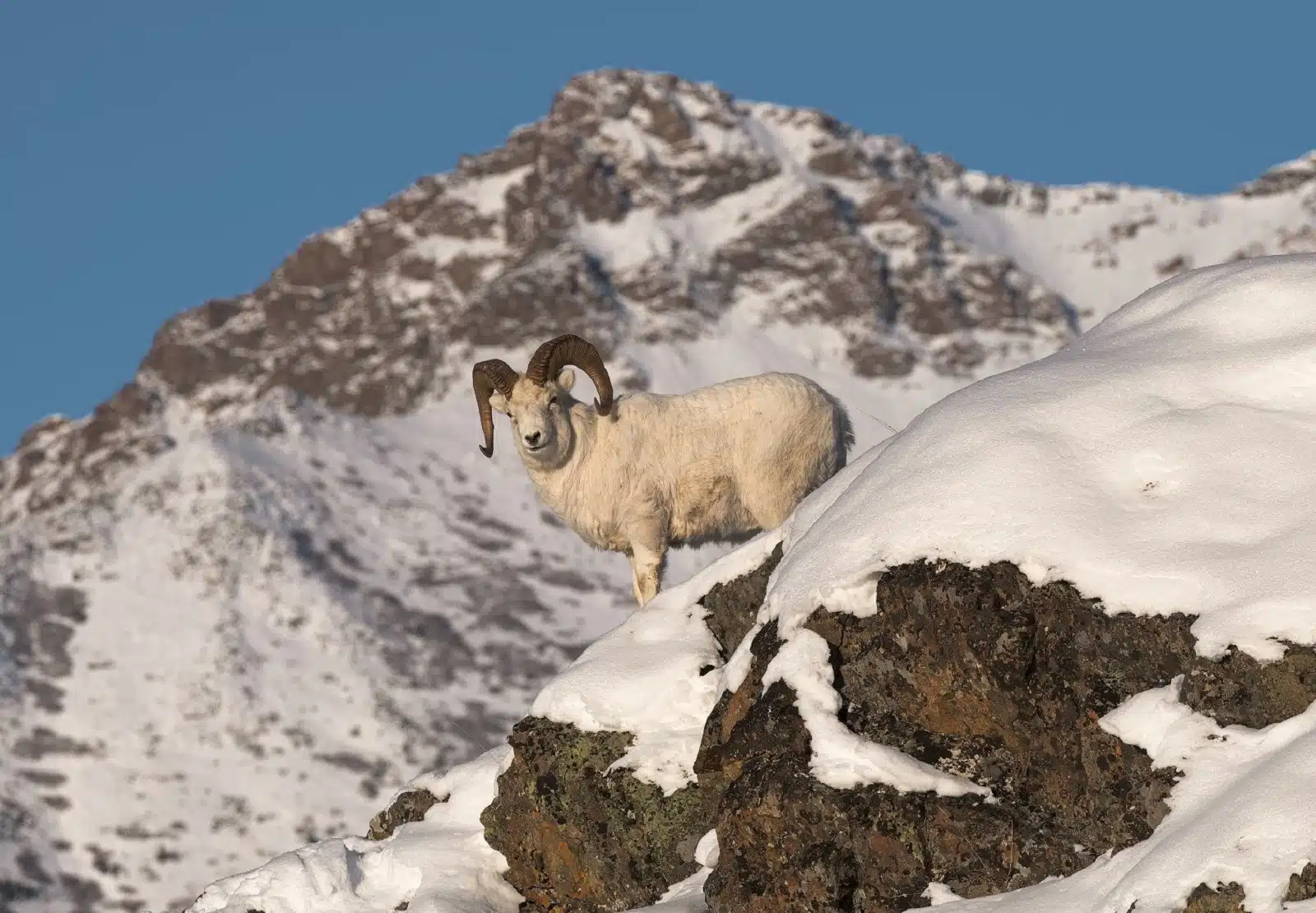
Image Credit: Shutterstock / John DiGiovanni
The Chugach Mountains, located near Anchorage, are an excellent place to view Dall sheep. These agile animals are often seen on steep, rocky slopes and ridges. The Seward Highway, running along Turnagain Arm, offers several pullouts where you can spot these sheep with binoculars or a spotting scope. Hiking in the mountains can also provide opportunities for closer encounters. Seeing these elegant animals in their rugged mountain habitat is a quintessential Alaskan experience.
Insider’s Tip
Visit the Alaska Wildlife Conservation Center near Girdwood to learn about Dall sheep and other Alaskan wildlife.
When To Travel
Late spring and summer are the best times for visibility and accessibility.
How To Get There
The Chugach Mountains are easily accessible from Anchorage, with the Seward Highway offering scenic drives and viewing spots.
10. Arctic Wildlife in Gates of the Arctic National Park
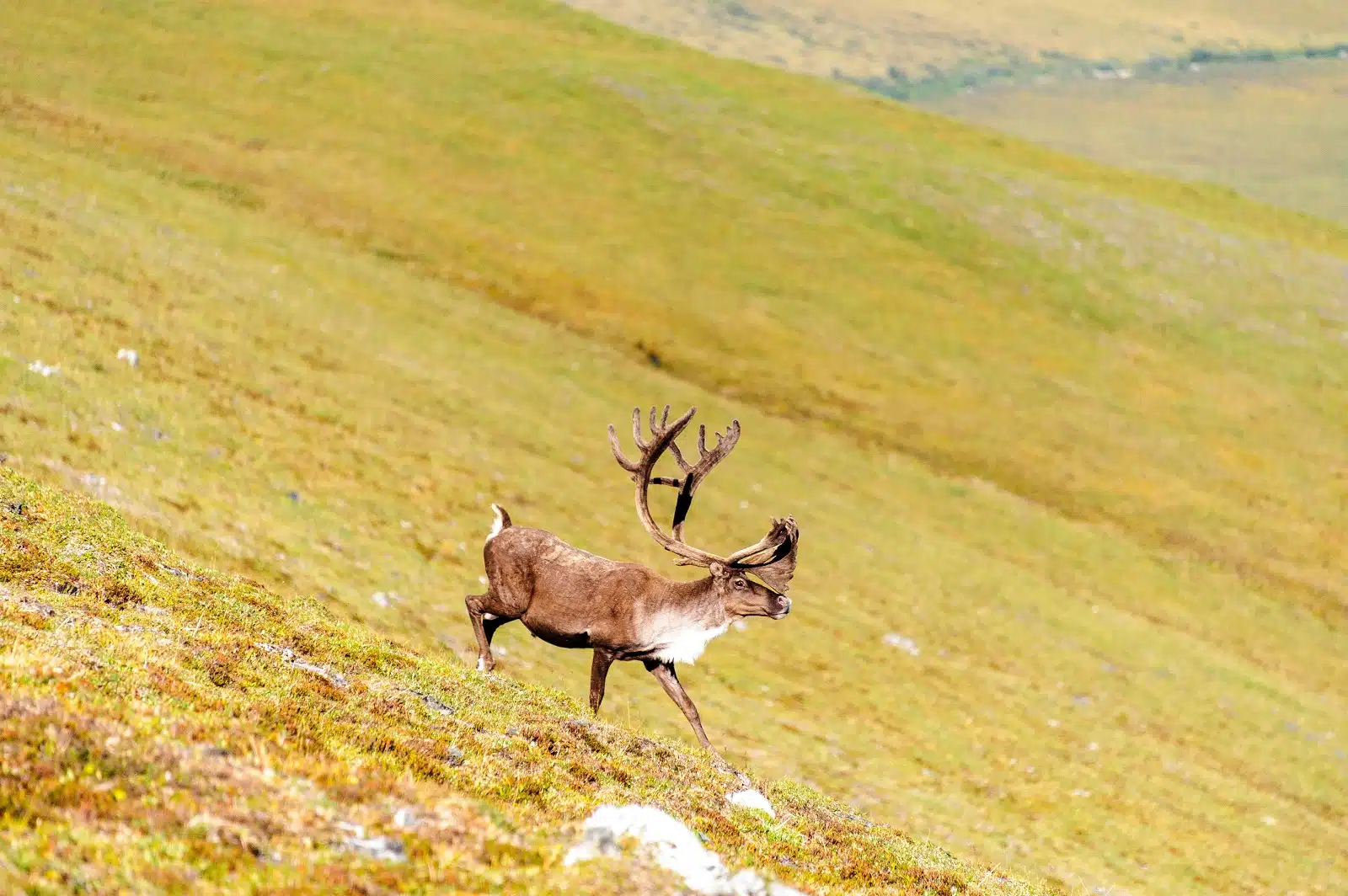
Image Credit: Shutterstock / Danita Delimont
Gates of the Arctic National Park, one of the least visited and most remote national parks in the United States, offers a true wilderness experience. This vast park is home to a variety of Arctic wildlife, including caribou, grizzly bears, and wolves. The park’s untouched landscapes provide a backdrop for some of Alaska’s most authentic wildlife viewing. Visiting the park requires careful planning and is best done with an experienced guide or outfitter. The experience of being in such a remote and wild place is both humbling and exhilarating.
Insider’s Tip
Consider a guided backpacking or rafting trip for an in-depth park exploration.
When To Travel
Summer, despite the mosquitoes, offers the best accessibility and wildlife viewing.
How To Get There
Access is typically by air taxi from Fairbanks or Bettles.
The Bottom Line
In Alaska, the wild is not just a place; it’s a way of life. As you venture into this vast and pristine wilderness, remember that each encounter with its wildlife is a privilege. Respect the natural habitats and behaviors of these magnificent creatures. With careful planning and a spirit of adventure, your Alaskan wildlife experience will be spectacular and profoundly enriching.
More From The Green Voyage
Top 10 Trending Travel Destinations 2024
6 Essential Banking Apps for International Travel – Managing Your Finances on the Go Traveling With Kids – 10
Tips to Create Memorable Family Holidays
The post Alaska’s 10 Wild Wonders – A Guide to Experiencing Its Majestic Wildlife 2024 first appeared on The Green Voyage.
Featured Image Credit: Shutterstock / JacobLoyacano .
Tips for Trip Success
Book Your Flight
Find an inexpensive flight by using Kayak, a favorite of ours because it regularly returns less expensive flight options from a variety of airlines.
Book Your Hotel or Special Accommodation
We are big fans of Booking.com. We like their review system and photos. If we want to see more reviews and additional booking options, we go to Expedia.
You Need Travel Insurance!
Good travel insurance means having total peace of mind. Travel insurance protects you when your medical insurance often will not and better than what you get from your credit card. It will provide comprehensive coverage should you need medical treatment or return to the United States, compensation for trip interruption, baggage loss, and other situations.Find the Perfect Insurance Plan for Your Trip
